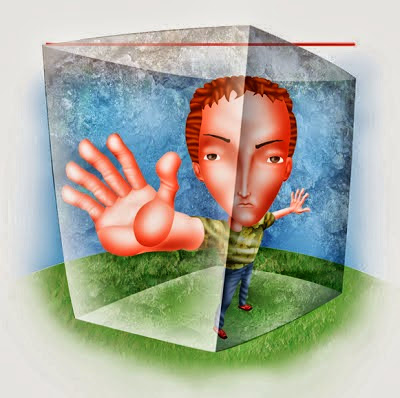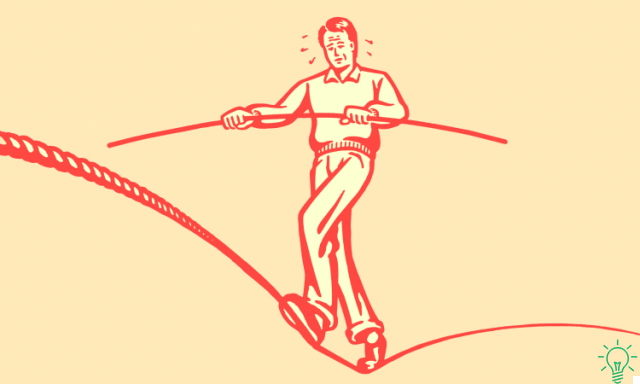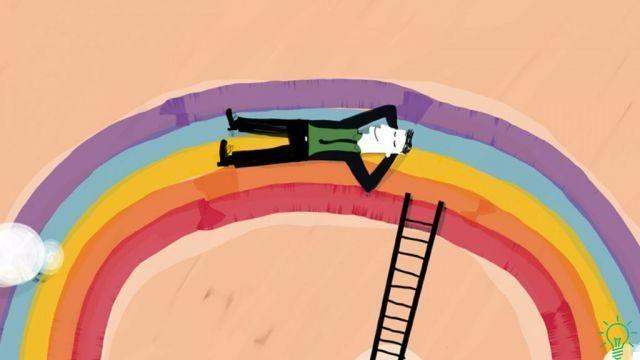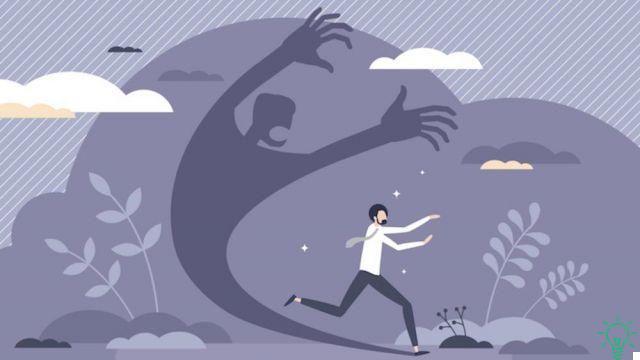
Fear is one of the most powerful basic emotions in existence. It allows us to avoid potentially dangerous situations by activating an adaptive response. Therefore, it is essential to keep us safe. The problem begins when the fear becomes omnipresent or is generated by situations that do not really represent a physical or psychological risk. The problem begins when we are suffocated by learned fears that prevent us from developing our potential by keeping us in too narrow a comfort zone.
We are born with the ability to feel fear, but we acquire our fears
The ability to feel fear is innate. It is an evolutionary mechanism that helps us keep ourselves safe. However, our fears are learned. In fact, babies don't show fear until around 8-12 months of age, usually in response to unfamiliar people or strange events. And not all children are afraid of strangers.
A study conducted at Rutgers and New York University found that children are more likely to consider a stranger threatening when they are not in a safe place. Conversely, when they are at home or on their mothers' lap, they are less likely to react fearfully when a stranger approaches.
This means that we have acquired our fears at some point in life. Some of these come from our direct experience. For example, we can fear dogs if at some point a dog has bitten us.
But we can also develop conditioned fears. This type of fear develops when we observe a fear reaction in others. It is not even necessary to see a dog bite someone, it may be enough for a person to tell us a bad experience or simply show us his fear of dogs.
The fears of others, the psychological weight that does not correspond to us
Loved ones, those who are a reference for us, have a greater influence on the formation of our identity and, therefore, it is easier for them to infect us with their fears. The behaviors of neighboring figures are essential to transmit safety, well-being and trust or, on the contrary, generate anxiety and fear in children.
Since children have not yet formed a picture of the world, they use their parents as references to obtain information and to know how they should behave in new situations. In fact, children are real experts in non-verbal language and easily perceive their parents' fear reactions. If they see that the mother or father reacts fearfully to dogs, they probably assume they are dangerous animals and need to be avoided.
Not having the ability to logically process parental fears, they make them their own, as revealed by a study conducted at the University of Limburg. For this reason, it is common for children to develop the same fears as their parents, especially their mothers.
This means that even though we are adults, it is likely that many of our learned fears actually belong to our parents or attachment figures in childhood. The problem is that many of those learned fears are not limited to the fear of spiders or dogs, but are much more complex fears that limit us enormously.
They can “infect us”, for example, with the fear of failure. Or the fear of leaving the comfort zone because our parents have given us the idea that the world is a hostile and dangerous place. In those cases, we let the fears of others affect our worldview, decisions and opportunities.
If we want to get rid of this "psychological burden", it is convenient that we reflect on all the learned fears that hinder us or generate discomfort but which are not based on our direct experiences and have no reason to exist.
How to overcome the learned fears?
The fact that learned fears do not come from our direct experiences does not make them any less frightening because they are burned into our minds. A study conducted at Columbia University revealed that learned fears are part of our brain memory. They depend both on the activity of the amygdala and on the regions involved in social cognition. And when they are activated, we react to them in the same way we react to fears that come from our direct experiences. In other words, our brains make no difference between the learned fears transmitted by others and our own.
The first step in getting rid of these learned fears is to understand their origin. When we detect a limiting fear we must ask ourselves: where does it come from? Do we know anyone in our immediate vicinity who shares this fear? Have we had any negative experiences that can explain that fear?
When we realize that they are learned fears, we are able to assume a psychological distance that allows us to analyze them from a more detached perspective. This does not mean that they will magically disappear, but we can begin to question their validity and realize how they limit our lives. At this point we can ask ourselves: what direct evidence supports this fear? To what extent is it adaptive? How does it limit my life? What would I do if I didn't feel that fear?


























